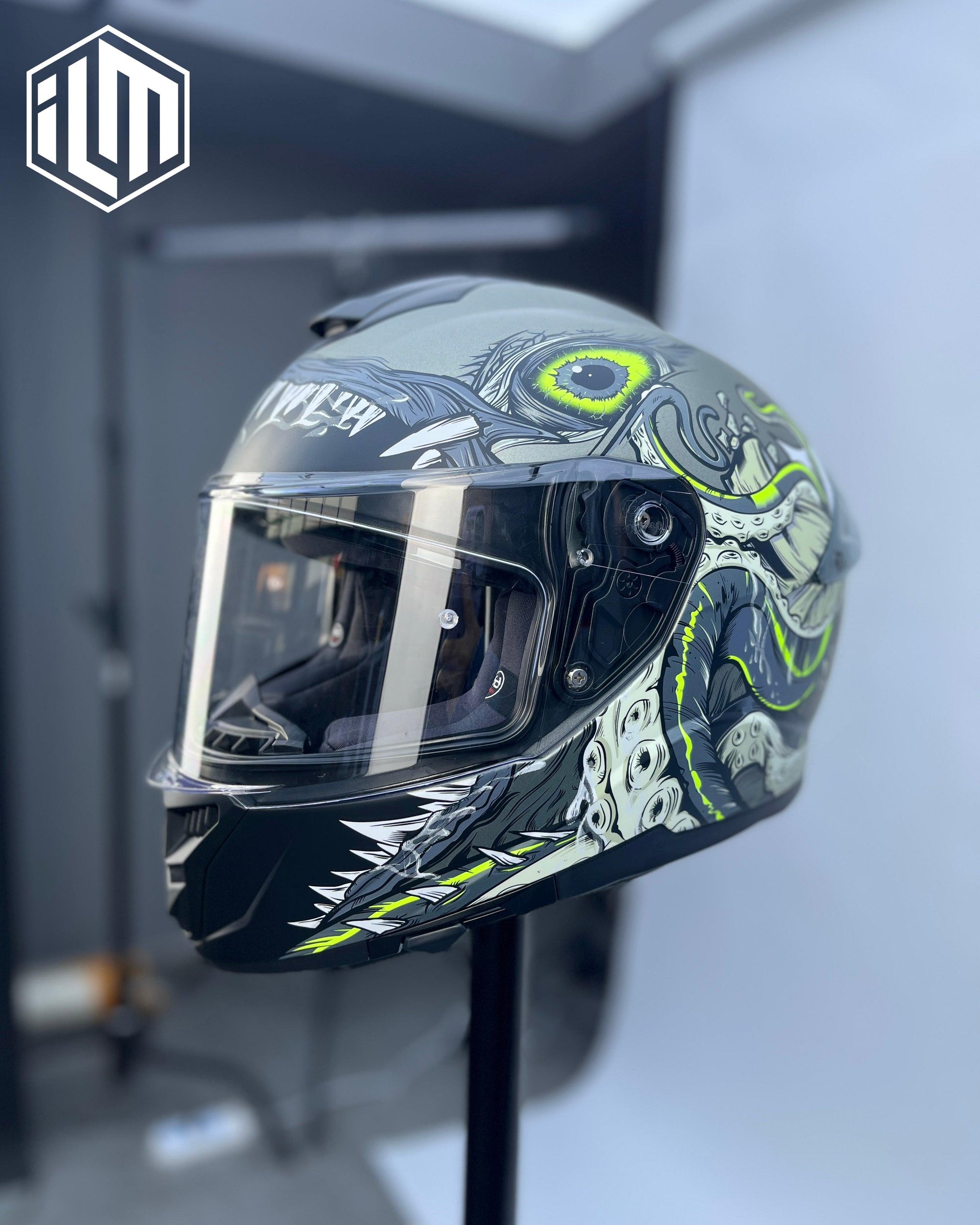Quickly check your motorcycle helmet! How many people do not know that helmets have their own service life? Are there safety risks when helmets are used beyond a certain service life? Do we need to replace helmets regularly?
We all know that motorcycle helmets are essential safety equipment for riders, not only because they have cool designs, but also because they can protect the rider's head and reduce head injuries and deaths caused by accidents. However, many people have a misconception that helmets can be used indefinitely as long as they are not damaged, but is this really the case? Today we are here to share some knowledge about the service life of helmets.

Many things around us have a shelf life. Whether it is all aspects of food, clothing, housing and transportation, there is basically nothing that can be used forever. Helmets also have their own shelf life.


The composition of the helmet
Note:The picture comes from Google Images, if there is any inappropriate contact to delete

The outermost layer of the helmet, which makes up the exoskeleton of the helmet. Commonly used helmet bodies are made of ABS plastic, fiberglass or carbon fiber. Its main function is to prevent foreign matter from puncturing and resist wear, so the strength, stiffness and impact toughness of the shell should meet the corresponding standards.

2. Buffer layer
The core of the helmet, made of expanded polystyrene (EPS), is able to withstand high impact and compression loads. The cushioning layer acts as a safety chamber, and when an impact occurs, it absorbs and disperses the energy of the impact to reduce the force of the impact on the head.

3. Foam padding
The cushioning surface between the polystyrene and the rider's head, made of foam padding, holds the rider's head comfortably while absorbing moisture from sweat. It mainly provides wearing comfort and wrapping. Nowadays, many lining fabrics are functional, which can play antibacterial, perspiration, and fireproof functions.

4. Wearing the device
It is a tightening system in the helmet. Its main function is to prevent slipping. It can firmly fix the helmet on the head and prevent it from falling off when it is hit hard. The combination methods are: buckle type, patch type, ring buckle type.

5. Sun visor
It is the eye protection device in the helmet, which can protect the face and eyes to a certain extent. It not only needs to meet the light transmission performance (the visible light transmission rate cannot be less than 85%), but also has a certain impact strength performance. Usually Made of hard, shatterproof polycarbonate, it can effectively prevent airborne debris from entering the helmet and damaging the rider's eyes.

6. Ventilation system
Although it is not part of the main safety system of the helmet, it is essential. A good ventilation environment can ensure the comfort of the rider, and can also avoid fogging of the mirror surface caused by breathing during riding, which affects vision.

The shell of the helmet will be bumped or exposed to sunlight, wind and rain for a long time in daily use, and the material will age. The middle layer also degrades performance at a certain speed, especially when the helmet is hit by external forces, the internal structure will be deformed and destroyed. All signs indicate that the helmet has a service life.

- Use high-quality ABS shell, high-density eps foam; Pass DOT certification to provide a basic guarantee for safe riding.
- Hidden inner lens design; Reinforced outer lens, lens with pinlock nails, can be equipped with pinlock30 (need to purchase separately)
- Removable and washable inner lining, soft and skin-friendly material, quickly absorbs sweat and keeps you dry at all times.
- Ten-byte quick buckle design, easy to use.
- Multiple vents are designed to ensure air circulation.
How often should helmets be replaced? So how often is it reasonable to change your helmet?
The general perception is that they need to be replaced 5 years after production. This is generally calculated from the official use of the helmet. If the helmet has not been used and has been stored in the cabinet, it can also be understood that it has not been worn out and can be ignored. However, if it is stored for a long time, remember to replace it in time.
If your helmet has been in an accident, please remember to replace it in time. Even if there are no obvious cracks on the surface of the helmet, the internal structure of the helmet may have changed, so remember to replace it for safety reasons.

ILM Full Face Motorcycle Helmet Model 861
In conclusion
With normal use, it is still best practice to replace your helmet every 3-5 years. The helmet is eroded by seasons, temperature, sweat, etc. After a long time, the helmet material will not meet its test standards, which means that the helmet should be replaced. We need to make a judgment on the replacement period based on our frequency of use, environment and the quality of the helmet. After all, nothing is more important than life safety. Common cleaners, skin care products and sun protection products can also degrade your helmet's performance over time because they may contain chemicals that affect the helmet's materials. The same goes for UV radiation, heat and other environmental factors, which can always have an effect on a helmet given enough time and dose. Therefore, the safety performance of our helmets is declining year by year. Even if they are well maintained, they cannot be used for a long time.



